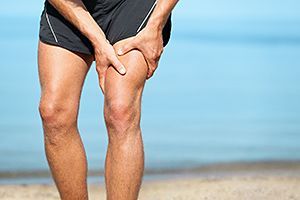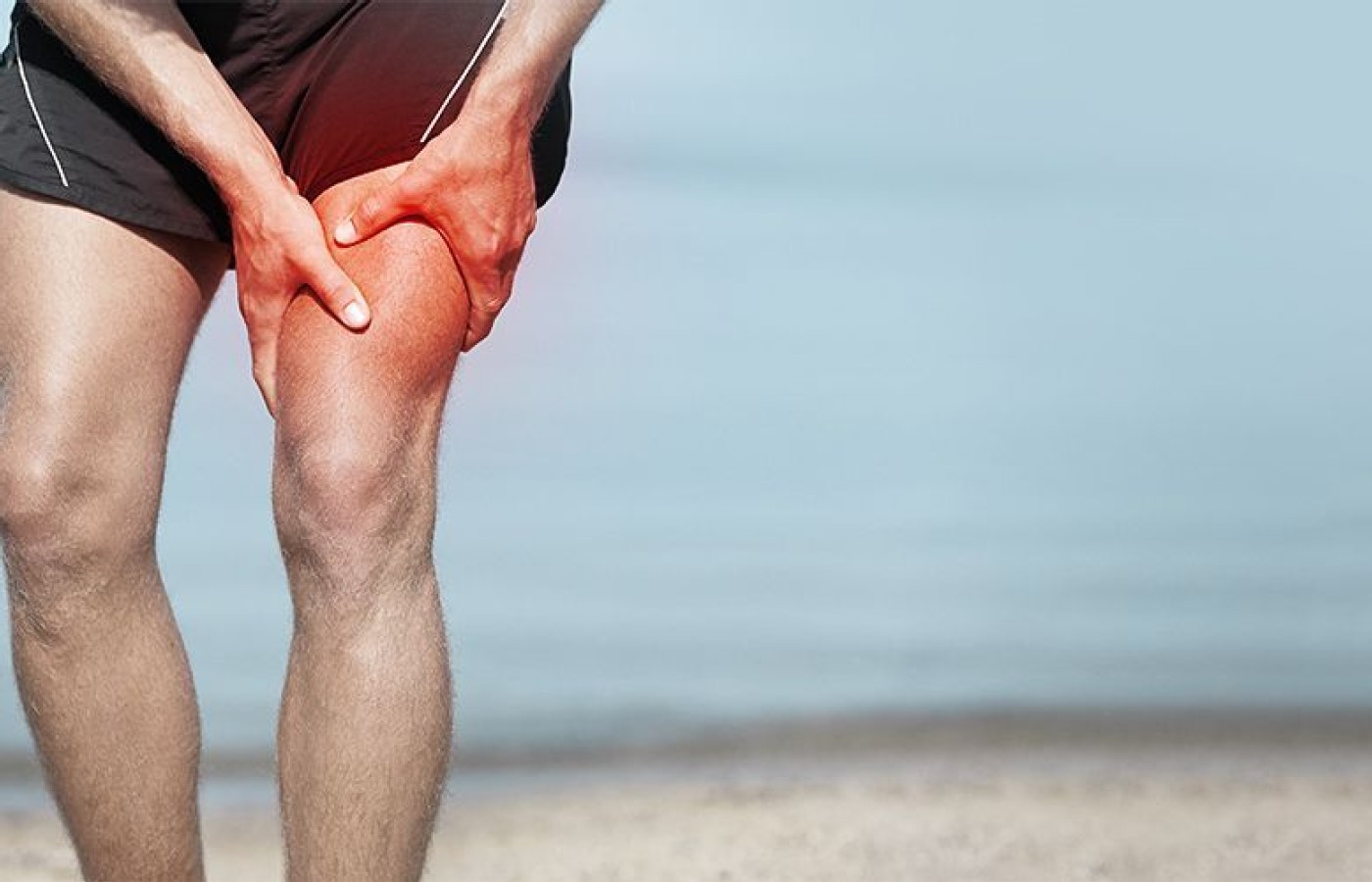Whether you accept it, avoid it or live somewhere in between, insurance coverage has become a defining issue for our profession. Patients increasingly expect to use their benefits, practitioners want to be compensated fairly for their time and expertise, and the system itself remains – at best – fragmented. The encouraging news is that coverage has expanded in meaningful ways. The challenging news is that reimbursement, across the board, remains inadequate.
New Tools for Chronic Soft-Tissue Pain
Western medicine identifies three healing phases, namely inflammation, proliferation and remodeling, for sports injuries great and small. When these three phases proceed naturally, healing progresses quickly. When healing is disrupted, problems arise: poor circulation of blood and lymph, as well as chronic pain and its associated disability.
The Problem With Pain Medication
During tissue repair, fresh blood brings nutrients and oxygen to provide materials for healing, while lymph removes the byproducts of tissue repair.1 Nonsteroidal anti-inflammatory drugs (NSAIDS – e.g., aspirin, ibuprofen, Advil) relieve pain most effectively the first time they are taken, but when taken daily, they lose their effectiveness and then pain ensues.2
As pain becomes chronic, it is often accompanied by stiffness and a reduced range of motion. The use of pain pills to relieve chronic pain often backfires.

Conventional therapies, such as icing, NSAIDs and cortisone injections, can alter and inhibit healing by blocking prostaglandin production, which in turn causes excessive scarring. Unintentional scarring can also result from the application of excessive cold to relieve pain. The more icing is used, the stiffer the tissue becomes later.3
Why Chronic Pain Is on the Rise
Before the 20th century, the method of treating pain was the use of "counterirritants" such as chili pepper, mustard and medicinal plasters. Since the discovery of aspirin and the increased use of anti-inflammatory agents, there has been an increased incidence of chronic pain. Many recent studies have associated NSAIDs with chronic pain, especially the degeneration of joint cartilage.
The inhibiting effect of NSAIDs during muscle healing also applies to cartilage repair. If the muscles become scarred and fibrous, tension receptors in the muscle belly do not readily change shape with the muscle, resulting in delayed or absent responses. The brain's signal to contract is increased, causing spasms and continuous tension.
With increased administration of cortisone, there is increased scarring of subcutaneous tissue. Cortisone injections have also been shown to demineralize bone and cause soft tissue to become weak. Cortisone injection at the site of inflammation kills the inflamed tissue, which stops sending out pain signals and is replaced with scar tissue.4 This action brings quick pain relief, but in a few months, pain nerves enter the aging scar tissue as it shrinks, leading to chronic pain.
Acupuncture / TCM
Acupuncture and Chinese medical modalities such as moxa, cupping and tuina often work very effectively when the sports injury is fairly acute. However, due to the nature of the Western medical care system, most Western acupuncturists only see chronic pain patients see in their clinics after all Western modalities have failed them. By this time, typical acupuncture and Chinese medical techniques may not be effective in treating these chronic conditions within a reasonable number of treatments.
Acupuncture can initiate a healing process with "puncture wounds" if healing has been incomplete or interrupted by icing, NSAIDs or cortisone injections. Local treatment at sites of sensitivity (ah-shi points), stimulates or re-stimulates healing as described in the three phases of healing.
Acupuncture can also relax a shortened muscle, which may chronically place tension on the tendons it serves. A chronically shortened tendon always sets up the tendency for inflammation or tendonitis.
An Integrative Approach
Acupuncture can be used as a complementary method to quickly end rebound pain when NSAIDs are discontinued. A clinically proven integrative approach uses the following four modalities to re-activate the innate healing mechanism, help the body quickly progress through the three healing phases, and heal chronic sports-related injury: local treatment with cross-fiber massage,5 electroacupuncture, far-infrared heat therapy, and low-level laser (photobiomodulation) therapy.
Let's use an example of the treatment of shoulder supraspinatus tendonitis to illustrate how this protocol works:
- Friction (transverse, cross-fiber) massage on the lesion (scar tissues site) for 10 minutes.
- Apply the ah-shi acupuncture technique to the lesion site.
- Apply electricity on the needles, low-level laser/LED light therapy (photobiomodulation) around the needles, and far-infrared heat over the treatment area for 25 minutes.
Generally, this protocol takes 8-10 treatment sessions, spaced twice weekly, for up to five weeks to heal the chronic pain.
The key to healing tissues with scars is to make the chronic nature of the tissue acute again. The acute phase involves inflammation. Friction massage and acupuncture are used to provoke the inflammatory response so that normal healing can occur. Once the chronic condition becomes acute, low-level laser light can be applied at the inflamed site to help speed up and enhance the healing processes by moving quickly from the inflammation phase through the proliferation phase to the final remodeling phase.
Clinical Application
Supraspinatus tendonitis is the most common tendinous lesion of the shoulder. The clinical examination always indicates painful resisted arm lateral abduction. A lesion at the tendon-bone junction is most commonly seen in the clinic.6
The treatment involves friction massage first for 10 minutes on the tendon itself. Counter-pressure is supplied by the thumb on the area medial to the deltoid, just anterior and inferior to the AC joint, while the patient places his / her arm on the back to shift the tendon to the front. The amplitude of the massage sweep is an inch, with the fingers moving horizontally across the near-vertical tendon.
Acupuncture can then be applied to motor points in the supraspinatus muscle and ah-shi points. Micro-amp electricity is applied between SI-12 and ah-shi points at 10 Hz and the amplitude is gently increased until the patient feels the electrical sensation. The recommended duration is 25 minutes.
Apply a photobiomodulation (low-level laser or LED) device around the needles and far-infrared heat over the needles.
Repeat the above-described treatment procedures for 5-10 visits depending on the patient's rate of healing. In general, it takes 8-10 treatments to completely heal the injury, based on my experience.
Practice Pearls: Keys to a Successful Outcome
With this integrative approach to healing chronic sports injuries, the clinician's orthopedic diagnostic skill and patient education are critical. It is crucial for acupuncturists to be well-trained in orthopedic anatomy to make the correct diagnosis. Once the diagnosis is made, this modality can be prescribed to treat a variety of sports-related injuries.
Educate the patient about the diagnosis, source of chronic pain, and a treatment plan including home exercise information. Many chronic pain patients consider acupuncture as a last resort in the Western medical care system. Thus, it is ultimately essential to inform the patient that healing takes time; especially with this modality, since it is counterintuitive that inflammation needs to be reintroduced to the injury site to ensure complete healing.
Remind the patient during every visit that it is OK to have more pain during the first two to three weeks of the treatment period, and that no NSAIDs and icing are allowed for relief.
Senior patients present an additional challenge because they may repeatedly question why the initial pain is necessary to ensure a curative outcome. Some of them may eventually become so doubtful about the worsening pain that they may cancel the following treatments altogether. It is up to each practitioner's judgment whether this integrative modality may be the best approach for his / her senior clients.
The integrative approach has been highly effective in healing chronic sports injury pain in my clinic for more than 22 years. Patients generally are very motivated to complete the required 8-10 treatments in less than five weeks. Further development in this unique approach can include multiple-site studies to validate its healing efficacy for many sports-related chronic pain conditions that are otherwise considered impossible to heal.
References
- Williams P, Warwick R, Dyson M, Bannister L. Gray's Anatomy. Churchill Livingstone, 1989: pp. 85-88.
- Hauser R. Prolo Your Pain Away! Curing Chronic Pain With Prolotherapy. Beulah Land Press, 1998: pp. 67-70.
- Hauser R, Op cit, pp. 60-63.
- Hauser R, Op cit, pp.64-65.
- Cyriax J, Cyriax P. Cyriax's Illustrated Manual of Orthopedic Medicine. Butterworth-Heinemann, 2000: pp. 19-23.
- Marcus A. Musculoskeletal Disorders: Healing Methods From Chinese Medicine, Orthopaedic Medicine, and Osteopathy. North Atlantic Books, 1998: pp. 516-518.



